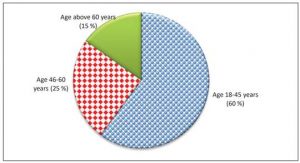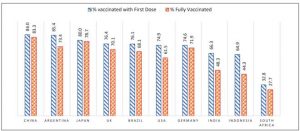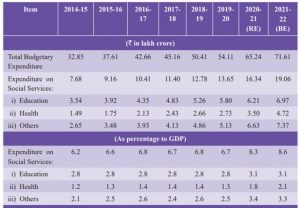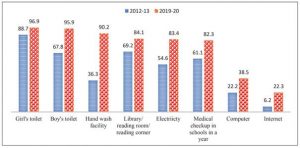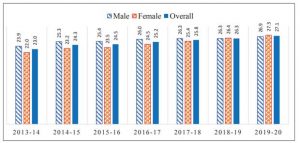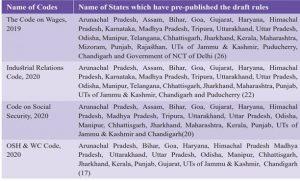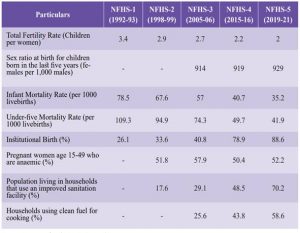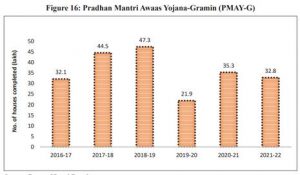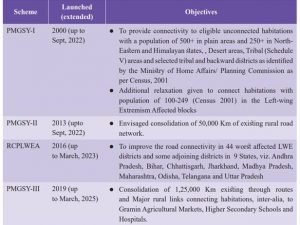DAILY CURRENT AFFAIRS (APRIL 01, 2022)
THE INTERNATIONAL RELATIONS
1. CHINA, SOLOMONS ISLANDS INK DRAFT OF CONTROVERSIAL SECURITY PACT
THE CONTEXT: China and the Solomon Islands have signed a draft version of a security pact that could see Chinese police and other forces take up duties in the Pacific Island nation.
THE EXPLANATION:
- A leaked document has revealed that China and the Solomon Islands are close to signing a security agreement that could open the door to Chinese troops and naval warships flowing into a Pacific Island nation that played a pivotal role in World War II.
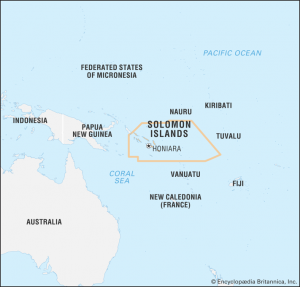
- Although it is marked as a draft and cites a need for “social order” as a justification for sending Chinese forces, it has set off alarms throughout the Pacific, where concerns about China’s intentions have been growing for years.
- The Solomon Islands, home to about 700,000 people, switched its diplomatic allegiance from Taiwan to Beijing in 2019 a contributing factor to riots in November 2021 between residents of different islands within the country.
What is the Pact?
- The leaked document states that “Solomon Islands may, according to its own needs, request China to send police, armed police, military personnel and other law enforcement and armed forces to Solomon Islands to assist in maintaining social order, protecting people’s lives and property.”
- It allows China to provide “assistance on other tasks” and requires secrecy, noting, “Neither party shall disclose the cooperation information to a third party.”
2. THE 20TH EDITION OF THE ‘VARUNA’ BILATERAL NAVAL EXERCISE
THE CONTEXT: In an effort to further strengthen Defence ties, India and France began a five-day mega naval wargame in the Arabian Sea in reflection of growing congruence in their maritime security cooperation.
THE EXPLANATION:
- The bilateral exercises between the two Navies were initiated in 1993. The exercise was christened as ‘Varuna’ in 2001 and has become a vital part of India – France strategic bilateral relationship.
- Various units including ships, submarines, maritime patrol aircraft, fighter aircraft and helicopters of the two navies are participating in the exercise. These units will endeavour to enhance and hone their operational skills in maritime theatre, augment inter-operability to undertake maritime security operations and demonstrate their commitment to promote peace, security and stability in the region as an integrated force.
- Having grown in scope and complexity over the years, Varuna series of exercises continue to provide both the navies opportunities to learn from each other’s best practices.
- The exercise has been a principal driver for operational level interactions between the two navies and has underscored the shared commitment of both nations to security, safety and freedom of the global maritime commons.
- The maritime cooperation between India and France has witnessed a major expansion in the last few years. The Indian and French navies in April last year too carried out a mega wargame in the Arabian Sea.
- The French Navy deployed its nuclear-powered aircraft carrier Charles de Gaulle, and its entire carrier strike group in that exercise, reflecting growing congruence in naval ties.
THE ECONOMIC DEVELOPMENTS
3. INDIA’S EXTERNAL DEBT ROSE TO $614.9 BILLION AT END OF DEC. 2021
THE CONTEXT: According to Finance Ministry India’s external debt rose by $11.5 billion to $614.9 billion in the three months ended December 2021.
THE EXPLANATION:
- The external debt to GDP ratio fell marginally to 20% at the end of December last year from 20.3% at the end of September 2021.
- According to India’s Quarterly External Debt Report for quarter ended December 2021, the country’s external debt was placed at $614.9 billion, recording an increase of $11.5 billion over its level at the end of September 2021.
- Valuation gains due to the appreciation of the U.S. dollar vis-a-vis major currencies such as Euro, Yen and Special Drawing Rights (SDRs) was placed at $1.7 billion.
- Commercial borrowings remained the largest component of external debt, with a share of 36.8%, followed by non-resident deposits (23.1%) and short-term trade credit.
- The share of short-term debt, with original maturity of up to one year, in total external debt increased to 18.6% at the end of December 2021 from 17.4% at end-September 2021.
- S. dollar denominated debt remained the largest component of India’s external debt, with a share of 52% at end-December 2021, followed by the Indian rupee (32%), SDR (6.7%), Yen (5.3%), and the Euro (3.1%).
- Also, the report added, “the borrower-wise classification shows that the outstanding external debt of government marginally declined while that of non-government sector increased as at end-December 2021 over the previous quarter”.
Value Addition:
What is External Debt?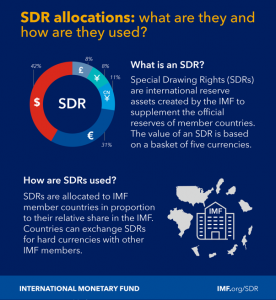
- External debt can be regarded as one of the forms of a tied loan, where the borrower needs to apply any spending of the funds to the country which has provided the loan.
- In case of an inability of the borrower country to produce and sell goods so as to make a profitable return to repay the loan, there arises a debt crisis.
- As of June 2021, India’s external debt was placed at US$ 571.3 billion, recording an increase of US$ 1.6 billion over its level at the end-March 2021.
- India’s external debt to GDP ratio declined to 20.2 per cent at the end-June 2021 from 21.1 per cent at end-March 2021.
- External debt sustainability can be measured based on the following parameters:
- Government’s debt and current fiscal revenue ratio.
- The overall share of short and long-term debt in the total debt burden.
- Share of concessional debt.
- Foreign debt to exports ratio
- Debt to GDP ratio
- The share of external debt to the total debt of the country.
THE ENVIRONMENT, ECOLOGY AND CLIMATE CHANGE
4. DOLPHIN COUNT SURGES IN GAHIRMATHA, DIPS IN CHILIKA
THE CONTEXT: According to the Annual Dolphin Census, the population of the dolphin along Odisha’s coast and in its water bodies has increased but the number of Irrawaddy dolphins in Chilika lake has fallen.
THE EXPLANATION:
- The report stated that Gahirmatha is home to the State’s largest population of dolphins, even more than Chilika.
- As per the 2022 dolphin census, Gahirmatha Marine Sanctuary and nearby areas in Bhitarkanika saw dolphin count skyrocket to 540 from 342 last year. These included 45 Irrawaddy , 135 ottlenose, 332 humpback, 13 striped and 15 spinner dolphins.
- In the 2021 census, forest officials sighted only 342 dolphins including 39 Irrawaddy, 22 bottlenose and 281 humpback dolphins. Dolphins are commonly sighted in water bodies in Khola, Nalitapata, Dhamara and in the sea near Satabhaya, Pentha, Agaranashi, Eakakula, Hukitola and other areas within the sanctuary.

- However, the count of dolphins in Chilika Wildlife Division saw a dip from 188 in 2021 to 167 in 2022.
Value Addition:
- Dolphins have been included in Schedule I of the Indian Wild Life (Protection) Act 1972, in Appendix I of the Convention on International Trade in Endangered Species (CITES), in Appendix II of the Convention on Migratory Species (CMS) and categorised as ‘Endangered’ on the International Union for the Conservation of Nature’s (IUCN) Red List.
THE INTERNAL SECURITY AFFAIRS
5. CENTRE REDUCES DISTURBED AREAS UNDER AFSPA IN 3 NORTH EAST STATES
THE CONTEXT: According to the Ministry of Home Affairs (MHA), AFSPA is being removed from 15 police station areas in seven districts of Nagaland; 15 police station areas in six districts of Manipur; and 23 districts entirely and one district partially in Assam.
THE EXPLANATION:
- After Assam and Meghalaya resolved a part of their 50-year boundary dispute in the Centre’s push for a “dispute-free Northeast”, Union Home Minister announced that the Armed Forces Special Powers Act (AFSPA) will be removed from several districts across Assam, Nagaland, and Manipur.
- According to the Ministry of Home Affairs (MHA), AFSPA is being removed from 15 police station areas in seven districts of Nagaland; 15 police station areas in six districts of Manipur; and 23 districts entirely and one district partially in Assam.
- The decision comes in the backdrop of vociferous demands for AFSPA to be lifted after six civilians were gunned down in Nagaland’s Mon district last December in a botched operation by security personnel. Seven more civilians and security personnel died in the retaliatory violence that followed, prompting the Nagaland Assembly to pass a resolution for the repeal of AFSPA.
- However, Mon district remains a “disturbed area since this is a border district and has a strong presence of NSCN-K (YA),” said sources in the Nagaland government.
- The notification of “disturbed areas” under AFSPA has been in force in Assam since 1990, in Nagaland since 1995, and in Manipur, except the Imphal Municipality area, since 2004. Starting in 2015, the Government removed AFSPA entirely from Tripura and Meghalaya, and partially from Arunachal Pradesh, which currently has three districts and two police station areas in a fourth district under the Act.
- In Assam, AFSPA will remain in the districts of Karbi Anglong, West Karbi Anglong, Dima Hasao, Dibrugarh, Tinsukia, Charaideo, Sivasagar, Golaghat, Jorhat and the Lakhipur subdivision of Cachar.
Demands to repeal AFSPA
- Anger over the incident is rising in Nagaland, where people have frequently accused security forces of wrongly targeting innocent locals in counterinsurgency operations against rebel groups under the Armed Forces Special Powers Act (AFSPA).
- Besides sweeping powers of search and arrest, the law, enforced in parts of four of the seven northeastern states as well as Indian-administered Kashmir, allows Indian forces to open fire to maintain public order in areas designated as “disturbed areas”.
- Nagaland is covered by the law as India says rebel groups operate from thick jungles of an unfenced region that also spans the neighbouring states of Manipur and Arunachal Pradesh, which border Myanmar.
What is Armed Forces Special Powers Act (AFSPA)?

How is a region declared ‘disturbed’?
Section (3) of the AFSPA empowers the governor of the state or Union territory to issue an official notification in The Gazette of India, following which the Centre has the authority to send in armed forces for civilian aid.
- Once declared ‘disturbed’, the region has to maintain the status quo for a minimum of three months, according to The Disturbed Areas (Special Courts) Act, 1976.

Criticism of AFSPA:
Sec 4(a) in which army can shoot to kill, as it violates article 21 which gives the right to life.
- Section 4(b) search without warrants violates the right to liberty and article 22.
- Dispersion of civil assembly by armed forces under section 121 violates the right to assembly
- No judicial magistrate permission required while arresting –violate article 22
- Overrides CrPC.
- Violation of human rights
- It alienates the people from the army and then from the rest of India. A feeling of otherworldliness is generated in their mind.
What should be done?
- Create committees at the district level with representatives of the army, administrators and the public which will report, assess and track complaints in that area.
- All investigations should be time-bound reasons for the delay must be communicated with the aggrieved.
- Amendments In-Laws: The lacunae in the Act, as a result of definitional voids with respect to terms like “disturbed”, “dangerous” and “land forces” need to be amplified to ensure greater clarity.
- The onus of proving the alleged person as a terrorist should lie with the forces. Sec 7 should be suitably amended to this effect.
SCHEMES & INITIATIVES IN NEWS
6. CJI INTRODUCES ‘FASTER’ SYSTEM
The Context: The Chief Justice of India has introduced the “Fast and Secured Transmission of Electronic Records” (FASTER) system.
About ‘FASTER’ System:
- The ‘Fast and Secured Transmission of Electronic Records’ (FASTER) software transmits court orders swiftly and securely through electronic mode, ensuring quicker communication of judicial orders.
- It also proposed that the e-authenticated copies of the record of proceedings/orders, digitally signed by the authorized officer may be transmitted through FASTER system to the duty-holders of the justice system.
Need:
- There have been cases where the jail inmates are not released despite bail orders passed by the court due to delays in communication of such orders. So, it was needed to utilize information and communication technology tools for efficient transmission of court orders.
Significance:
- Ensure that undertrials are not made to wait for days on end behind bars to be released because the certified hard copies of their bail orders took time to reach the prison.
- Undertrials are the people who are yet to be found guilty of the crimes they have been accused of.
- Prevent unnecessary arrests and custody of people even after the court had already granted them its protection.
- Communicate a stay on an execution ordered by the final court on time.
Challenges:
- The availability of internet connection in jails across the nation as without this facility transmission of such orders to prisons will not be possible.
- Awareness and training to jail officials about the use of digital technology.
THE PRELIMS PRACTICE QUESTIONS
QUESTION OF THE DAY
Q1. Consider the following statements about Koodiyattam:
- It is a traditional performing art form in the state of Tamil Nadu, India.
- It has elements of Koothu, an ancient performing art from the Sangam era.
- It is officially recognized by UNESCO as a Masterpiece of the Oral and Intangible Heritage of Humanity.
Which of the statements given above is/are correct?
a) 1 and 2 only
b) 2 and 3 only
c) 3 only
d) 1, 2 and 3
ANSWER FOR 31ST MARCH 2022
Answer: C
Explanation:
- Project NETRA is an initiative by the Indian Space Research Organisation (ISRO) which is an early warning system in space to detect debris and hazards to Indian satellites.
- Under this project, the Indian space organization plans to put up many observational facilities like telescopes, connected radars, data processing units, and a control center.
